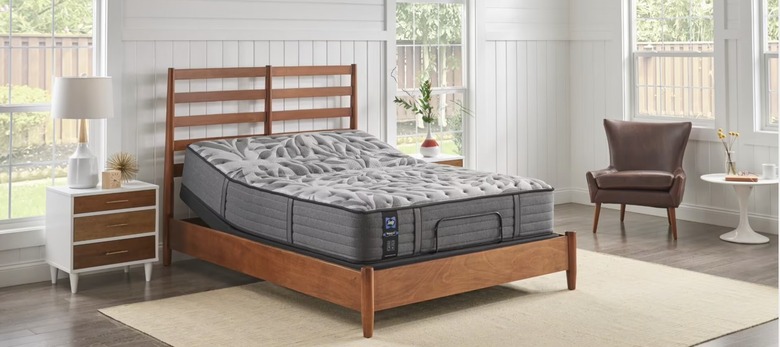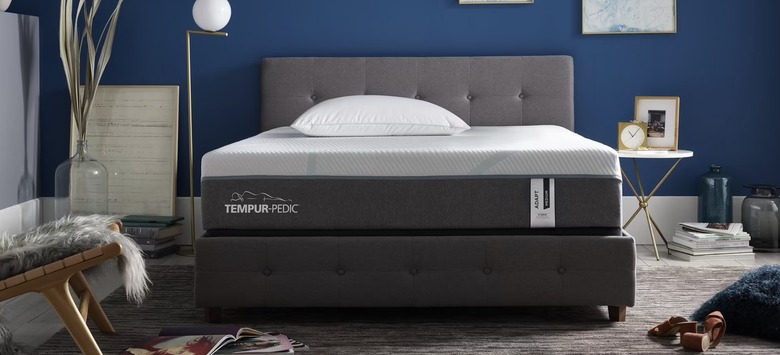What Are The Differences Between Tempur-Pedic And Sealy Posturepedic?
As you make your way through your mattress shopping journey, you probably come across the names Tempur-Pedic and Sealy Posturpedic. And while the similarities in their names may lead you to believe that these two types of mattresses are essentially the same, they aren't. In fact, there are some key differences between Tempur Pedic and Sealy Posturepedic mattresses.
In this article, we'll take a closer look at those differences so you can make an informed decision.
Not to confuse the issue, but it's worth noting that Tempur-Pedic and Sealy merged in 2012, but the two companies are independently operated.
What Does Posturepedic Mean?
What Does Posturepedic Mean?
Before we dive into the differences between a Sealy Posturepedic mattress and Tempur-Pedic mattresses, it might be best first to address what Posturepedic actually means. According to Sealy's own website, the term Posturepedic is a contraction of two words, and as you may have guessed, those two words are posture and orthopedic. Ultimately, Posturepedic mattresses aim to maintain your spinal alignment while you sleep.
What Is A Sealy Posturepedic Mattress?
What Is A Sealy Posturepedic Mattress?
Sealy Posturepedic mattresses are a unique combination of innerspring, foam, and fabric that's designed to give you gives your body the proper support it needs for a great night's sleep.
While you sleep, your spine must be supported so the surrounding muscles can relax. At the same time, the mattress you're sleeping on should relieve common pressure points, eliminating your need to toss and turn to find a comfortable position. With Sealy's orthopedically correct design (aka Sealy's Posturepedic mattress), users will find a balanced combination of the two. At the end of the day (pun intended), Posturepedic mattresses offer targeted pressure relief and exceptional back support.
Sealy produces a wide range of Posturepedic mattresses, including the Posturepedic® Line and The Posturepedic® Plus Line.
Posturepedic® Plus Spring II
Posturepedic® Plus Spring II
Pros And Cons Of Sealy Posturepedic Mattresses
Pros And Cons Of Sealy Posturepedic Mattresses
Due to the nature of its design, Sealy Posturepedic mattresses offer targeted back support for side sleepers. Moreover, the brand is known for its exceptional edge support, which expands the usable sleeping surface of the bed.
While the innerspring design will prevent the mattress from sagging over time, Sealy mattresses may be too soft for some folks, and they're not the best choice for combination sleepers.
What Is A Tempurpedic Mattress?
What Is A Tempurpedic Mattress?
Using research and technology borrowed from NASA's space program, Tempur-Pedic foam is quite unique. Initially used in seat cushions to absorb the G-Force as astronauts traveled through space, the scientists at Tempur-Pedic made a few adjustments, evolving the product into mattresses that promise exceptional support while you sleep.
TEMPUR-Adapt Mattresses
TEMPUR-Adapt Mattresses
Pros And Cons Of Tempurpedic Mattresses
Pros And Cons Of Tempurpedic Mattresses
Memory foam has an exceptional ability to conform to your shape, and like Posturepedic mattresses, they do a great job at relieving pressure points. Notably, due to the advanced molecular structure of the brand's TEMPUR Material, Tempur-Pedic mattresses offer superior motion cancellation. Some readers may remember the "Wine Glass Test" from the 90s, where participants were challenged to knock over a glass of red wine by jumping on the other side of the bed. That means that when your partner moves around during the night, you won't feel the motion transfer (or the ripple effect).
While all of the above are great selling points, there are some downsides to Tempur-Pedic mattresses. First, memory foam mattresses often contain VOCs, and they're known to off-gas (or release those VOCs) into the air. Not only can the off-gassing be unpleasant, but it can also be hazardous to your health. Second, memory foam mattresses are notorious for their heat retention, so Tempur-Pedic mattresses may not be the best bet for hot sleepers.
Key Similarities And Differences Between Sealy Posturepedic And Tempur-Pedic mattresses
Key Similarities And Differences Between Sealy Posturepedic And Tempur-Pedic mattresses
If you're still deciding between the two, here are the major differences to look out for.
|
Sealy Posturepedic |
Tempurpedic |
|
Made with hybrid, foam, and innerspring coils |
Only available in hybrid foam |
|
Made with CertiPUR-US certified foam |
Made with CertiPUR-US certified foam |
|
Mattresses were designed based on input from orthopedic specialists |
Made from the same NASA technology used for G-Force absorbing seat cushions on space shuttles |
|
Firmness options range from ultra-plush to ultra-firm |
Firmness options range from plush to firm |
|
Less expensive than Tempur-Pedic with prices ranging from $700 – $2,500 |
Expensive with prices ranging from $2,000 to $5,000 |
|
Ideal for back sleepers |
Ideal for back, stomach, or side sleepers |
|
Fine for hot sleepers |
Not great for hot sleepers |


